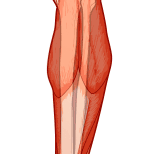Lower Leg Pain & Injury Treatment


Lower leg injuries mainly involve bone fractures due to a trauma or muscular problems due to sport injuries.


Lower leg injuries mainly involve bone fractures due to a trauma or muscular problems due to sport injuries.
Calf strains happen in most cases during sport activities. The cause is either overuse or excessive load to the muscle (sprinting or jumping). The severity and symptoms of a muscle strain depends on the degree of stretching or tearing of the muscle.
Physiotherapy optimizes the healing process. Exercise therapy, incl. stretching-, strengthening- and stability exercises helps to restore full function of the muscle.
Patellar tendonitis is an overuse injury affecting your knee. A common name for it is jumper’s knee or runner’s knee. It is the result of your patella tendon (tendon of the quadriceps) being overstressed due to repetitive sport activities, sudden increase in trainings intensity or generally too high trainings intensity. Pain is located in the front of the knee and may occur during or after activities.
During the acute stage physiotherapy helps to reduce pain and inflammation signs. Once the condition improves exercise therapy incl. stretching-, strengthening- and stability exercises helps to restore full function of the knee and to avoid reoccurrence.
Patellofemoral pain syndrome is one of the most common knee complaints and describes pain behind the kneecap, (usually after sitting for a longer period, walking stairs or sport) where the patella (kneecap) articulates with your thigh bone (femur). This joint is known as your patellofemoral joint. The pain is caused by misalignment of the knee cap, which results in irritation of the cartilage or bone beneath. The most common causes of patellar misalignment are an abnormal muscle imbalance (weak vastus medialis oblique or VMO or tight ITB) and poor biomechanical control.
Physiotherapy helps to re-align the patella by specific exercises to strengthen and stretch the muscles around the knee. After completion of treatment patients can return to their sports without any restrictions.